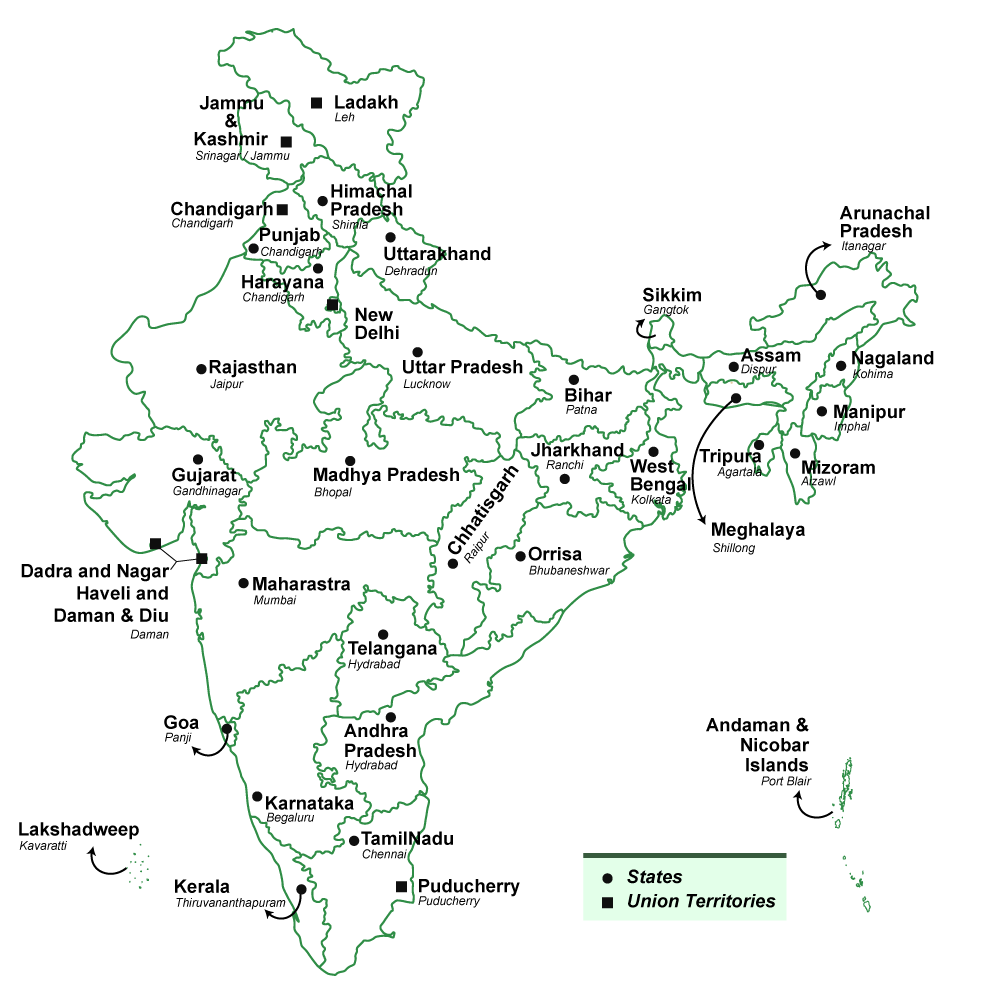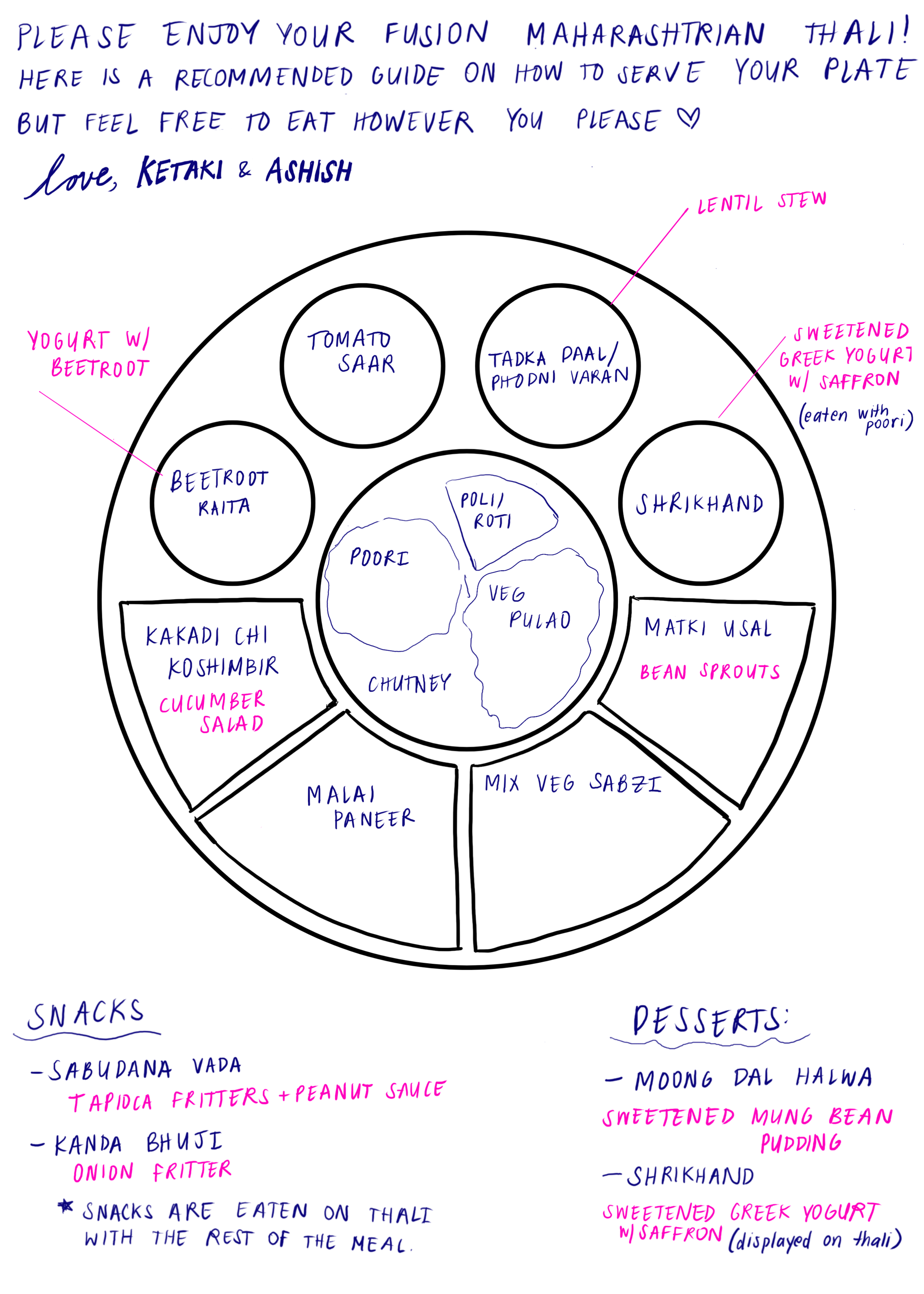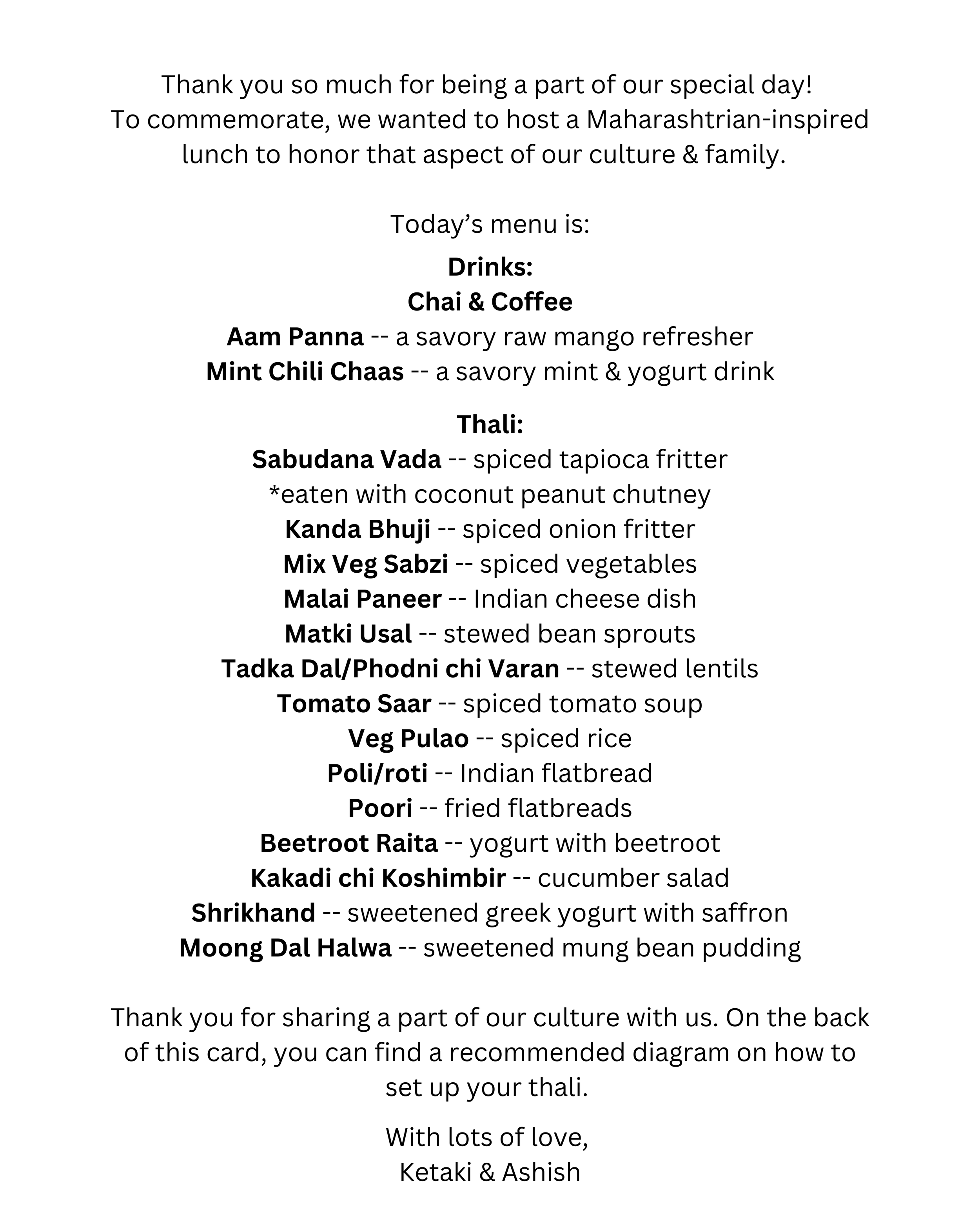What is “Indian cuisine”?
Map of India showing the different states and union territories
The way Indian food is portrayed in the mainstream is incredibly hegemonic, worldwide and especially, here in the United States. While most people are familiar with North Indian classics (more specifically, Punjabi classics), such as Butter Chicken, Chicken Tikka Masala, or Chana Masala with naan and maybe familiar with South Indian classics such as dosa and idli, Indian food is much more nuanced than popular culture may suggest. But generic terms like “North Indian” cuisine conglomerate together independent cuisines such as Gujarati food, Bengali food, and Rajasthani food, to name a few. In the same way, “South Indian” cuisine incorrectly conflates different cuisines in the South such as Kerela/Malyali food, Tamil food, or Telugu food as one and the same. Describing the Indian food landscape as a monolith is reductive because of its sheer vastness—each Indian state (India has 28 states) has an independent linguistic, cultural, and culinary profile; much like how each European nation has its own cuisine, language, and cultural history. (Fun fact: the most populous country in the EU, Germany, has 84M people, while the most populous state in India has 240M people—almost the size of Nigeria!)
When I was getting married this September, I had an opportunity to highlight a more niche cuisine. I’m half North Indian (from UP) and my husband is fully North Indian (from UP and Rajasthan), so all of our guests had strong exposure to the cuisines. My mom’s side is Maharashtrian (from Western India), whose cuisine I was sure many of our guests may not have eaten or had much exposure to at all. To pay homage to that side of my heritage, my husband and I decided to serve a fusion “traditional” Maharashtrian lunch following our wedding ceremony to our guests. To enhance the experience, I hand-drew menu cards to hand to the guests so that they would know how to enjoy their food. What we worried was too niche ended up being a complete hit. Guests spent the entire day raving about how tasty the food was, how they had never tried anything like it before, and how the diagram made them extra hungry and eager for the food throughout the ceremony.
Front of the menu-card: how to construct your thali
Back of the menu-card: the menu
Stories like these are reminders that while we may gravitate towards more mainstream, popular foods (or anything, for that matter), highlighting smaller, more independent cuisines is incredibly important—not just to appreciate lesser-known food, but to recognize an entire people and cultural identity. In hegemonizing and conglomerating many, large cultures, we tend to dismiss the power of the unique and distinctive, and undermine people’s personhood. Indian food is so special because of how diverse it is—how within one landmass of over 1.4 billion people, there is such stark diversity—diversity of language, of food, of terrain, of climate, of religion, and of thought. So the next time you decide to eat Indian food, try to see if you can locate a new cuisine within the country that you haven’t tried, or better yet—try cooking a new recipe!
Close-up of the Marathi thali
My husband and I enjoying the Marathi thali!




